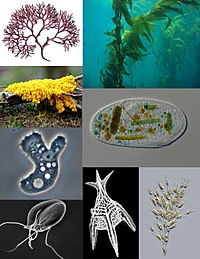
Photo from wikipedia
Global forest aboveground biomass (AGB) is very important in quantifying carbon stock, and, therefore, it is necessary to estimate forest AGB accurately. Many studies have obtained reliable AGB estimates by… Click to show full abstract
Global forest aboveground biomass (AGB) is very important in quantifying carbon stock, and, therefore, it is necessary to estimate forest AGB accurately. Many studies have obtained reliable AGB estimates by using light detection and ranging (LiDAR) data. However, it is difficult to obtain LiDAR data continuously at regional or global scale. Although many studies have integrated multisource data to estimate biomass to compensate for these deficiencies, few methods can be applied to produce global time series of high-resolution AGB due to the complexity of the method, data source limitations, and large uncertainty. This study developed a new method to produce a global forest AGB map using multiple data sources—including LiDAR-derived biomass products, a suite of high-level satellite products, forest inventory data, and other auxiliary datasets—to train estimated models for five different forest types. We explored three machine learning methods [artificial neural network, multivariate adaptive regression splines, and gradient boosting regression tree (GBRT)] to build the estimated models. The GBRT method was the optimal algorithm for generating a global forest AGB map at a spatial resolution of 1 km. The independent validation result showed good accuracy with an R2 value of 0.90 and a root mean square error value of 35.87 Mg/ha. Moreover, we compared the generated global forest AGB map with several other forest AGB maps and found the results to be highly consistent. An important feature of this new method is its ability to produce time series of high-resolution global forest AGB maps because it heavily relies on high-level satellite products.
Journal Title: IEEE Journal of Selected Topics in Applied Earth Observations and Remote Sensing
Year Published: 2020
Link to full text (if available)
Share on Social Media: Sign Up to like & get
recommendations!